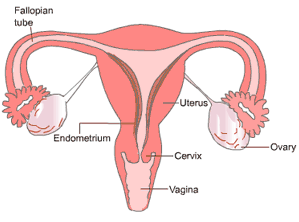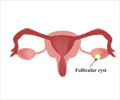Oophorectomy - Overview
Synonyms: Surgical Removal of Ovary, Oophorectomy, Ovarian Surgery, Ovariectomy, Ovarian Ablation
Surgical removal of one or both ovaries is called Oophorectomy. It accelerates menopause by a few years in a menstruating women.
The ovaries are a part of a woman's reproductive system that store and release eggs (ova) for fertilization and produce the female sex hormones called estrogen and progesterone. There are two ovaries that lie by the side of the uterus. If one of the two ovaries is removed, a woman may continue to menstruate and have children. If both ovaries are removed, menstruation stops and a woman will lose the ability to have children.
Anatomy Of The Female Reproductive System

In an Oophorectomy, one or a portion of one ovary may be removed or both ovaries may be removed. When Oophorectomy is done to treat ovarian cancer or other spreading cancers, both ovaries are always removed. This is called a Bilateral Oophorectomy.
In younger women with early-stage ovarian tumors who have not yet completed their families, the surgeon may perform removal of ovaries from only one side (called Unilateral Oophorectomy). This approach is called fertility saving or fertility-sparing surgery as it allows the women to reproduce.
Occasionally uterus removal (hysterectomy) is performed in women above the age of 40 along with the ovaries and fallopian tubes. The surgery is then called "Total Abdominal Hysterectomy with Bilateral Salpingo- Oophorectomy", abbreviated as TAH-BSO.
Oophorectomy is sometimes recommended when the hormones produced by the ovaries are making a disease, such as breast cancer or endometriosis, worse.
In rare instances where there is a strong family history of ovarian tumors, the ovaries are removed in an attempt to reduce the possibility of developing a future disease, such as ovarian cancer. This is called a Prophylactic Oophorectomy.
If a patient with ovarian cysts wishes to have children, only the affected ovary oophorectomy may be removed, leaving the other ovary intact.










